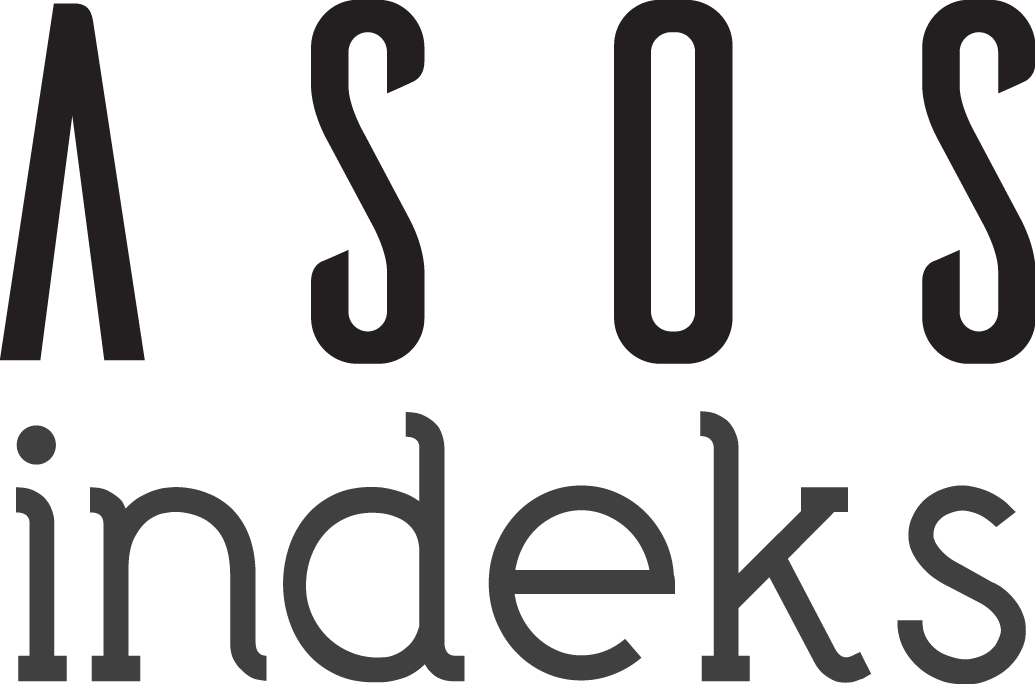Abstract
Amaç: Orbital yaralanma acil serviste (AS) önemli başvuru nedenlerindendir. Çalışmanın amacı AS’e başvuran orbital yaralanması olan hastaların klinik ve radyolojik bulgularının değerlendirmektir.
Method: AS’e orbital yaralanma nedeni ile başvurmuş ve bilgisayarlı tomografisi yapılmış olan hastaların yaşı, cinsiyeti, travma tipi, travma lokalizasyonu, ek travma yerlerinin varlığı (varsa), yaralanan göz, yaralanma nedeni ve yaralanma lokalizasyonu değerlendirildi.
Sonuç: 314 hastanın yaş ortalaması 46.54±18.23 yıl (18-79) idi. Hastaların 217 (%69.1)’u erkek idi. Hastaların 202 (%64.3)’ünün travma tipi künt idi. 102 (%32.5)’inin trafik kazası nedeniyle yaralandığı saptandı. Hastaların yaralanma lokalizasyonlarının dağılımlarında, kemik kırığı 202 (%64.3) hastada vardı. Künt yaralanması olan hastalar daha yaşlı idi (p<0.001). Yüksekten ve yer seviyesinden düşme olan hastaların yaşları diğer yaralanmalara göre daha yüksek idi (p<0.001, p<0.001). Ayrıca trafik kazası nedeni ile gelen hastaların yaşları da ateşli silah yaralanması olan hastalara göre daha yüksek idi (p<0.05). Kadınlarda trafik kazaları ve yer seviyesinde düşme daha fazla iken, erkeklerde ateşli silah yaralanmaları daha fazla idi (p<0.001, p<0.001, p<0.001 sırası ile). Erkeklerde ön kamara yaralanması daha fazla idi (p<0.001)
Tartışma: Hastaların yaşlarına göre orbital yaralanmanın tipi, nedenleri, cinsiyetlerine göre yaralanma bulguları değişiklik göstermektedir.
References
- Piniara A, Georgalas C: Surgical anatomy of the orbit, including the intraconal space [Internet]. In: Endoscopic surgery of the orbit. Elsevier, 2021, pp. 18–27. [cited 2023 Mar 20]. Available from: https://linkinghub.elsevier.com/retrieve/pii/B9780323613293000044.
- Gooris PJJ, Cornelius CP. Anatomy of the orbit: overall aspects of the peri and intra orbital soft tissues. In: Gooris PJJ, Mourits MP, Bergsma JE, editors. Surgery in and around the orbit: CrossRoads. Cham: Springer International Pub lishing; 2023. p. 59–119. Available from https://doi.org/10.1007/978-3-031-40697-3_23
- Heftye-Sánchez B, Prieto-Vargas V, Serna O, et al. Treatment of orbital floor fractures in a reference center in Mexico city. Int Surg J. 2023:10(12): 1885-1890. doi:10.18203/2349-2902.isj20233669
- Delpachitra SN, Rahmel BB. Orbital fractures in the emergency department: a review of early assessment and management. Emerg Med J. 2016:33(10):727-731. doi:10.1136/emermed-2015-205005
- Irfan A, Punjabi N, Suresh A, et al. Orbital trauma epidemiologic characteristics by life stage. Craniomaxillofac Trauma Reconstr. 2024: 19433875241275102. doi:10.1177/19433875241275102
- Colangeli W, Ferragina F, Kallaverja E, et al. Orbital fractures treated in a university hospital of southern Italy: epidemiology, outcomes and prognostic factors resulting from 538 retrospectively analyzed cases. Oral Maxillofac Surg. 2024:28(3):1219-1225. doi:10.1007/s10006-024-01236-z
- Gultekin E, Ciftci Z, Develioglu ON, et al. Endoscopic orbital decompression of an isolated medial orbital wall fracture: a case report. Ear Nose Throat J. 2011:90(12):E32-35. doi:10.1177/014556131109001216
- al-Qurainy IA, Stassen LF, Dutton GN, et al. The characteristics of midfacial fractures and the association with ocular injury: a prospective study. Br J Oral Maxillofac Surg. 1991:29(5):291-301. doi:10.1016/0266-4356(91)90114-k
- Chow J, Parthasarathi K, Mehanna P, et al. Primary Assessment of the patient with orbital fractures should include pupillary response and visual acuity changes to detect occult major ocular injuries. J Oral Maxillofac Surg. 2018:76(11):2370-2375. doi:10.1016/j.joms.2018.04.024
- Amrith S, Saw SM, Lim TC, et al. Ophthalmic involvement in cranio-facial trauma. J Craniomaxillofac Surg. 2000:28(3):140-147. doi:10.1054/jcms.2000.0138
- Christensen DN, Wagner WD, Maar DJ, et al. Orbital wall fractures and ocular injury: impact on management. Facial Plast Surg Aesthet Med. 2023:25(1):22-26. doi:10.1089/fpsam.2021.0226
- Moffatt J, Hughes D, Bhatti N, Holmes S. Orbital bone fractures in a central London trauma center: a retrospective study of 582 patients. J Craniofac Surg. 2021;32(4):1334-1337. doi:10.1097/SCS.0000000000007384
- Rafindadi AL, Pam WA, Chinda D, MahmudAjeigbe FA. Orbital and ocular trauma at Ahmadu Bello University Teaching Hospital, Shika-Zaria. A retrospective review. Ann Nigerian Med. 2013;7(1):20-23. doi: 10.4103/0331-3131.119982
- Irfan A, Punjabi N, Suresh A, et al. Orbital trauma epidemiologic characteristics by life stage. Craniomaxillofac Trauma Reconstr. 2024:17: 19433875241275102. doi:10.1177/19433875241275102
- Mancera N, Do DP, Griepentrog GJ, et al. Assault-related orbital trauma at an urban level i trauma center: racial segregation and other neighborhood-level social determinants. Ophthalmic Plast Reconstr Surg. 2023;39(2):182-186. doi:10.1097/IOP.0000000000002286
- Karabekir HS, Gocmen-Mas N, Emel E, et al. Ocular and periocular injuries associated with an isolated orbital fracture depending on a blunt cranial trauma: anatomical and surgical aspects. J Craniomaxillofac Surg. 2012:40(7):e189-93. doi:10.1016/j.jcms.2011.10.006
- Goelz L, Syperek A, Heske S, et al. Retrospective cohort study of frequency and patterns of orbital injuries on whole-body CT with maxillofacial multi-slice CT. Tomography. 2021:17;7(3):373-386. doi:10. 3390/tomography7030033
- Jo A, Rizen V, Nikolić V, Banović B. The role of orbital wall morphological properties and their supporting structures in the etiology of "blow-out" fractures. Surg Radiol Anat. 1989;11(3):241-248. doi:10.1007/BF 02337832
- Kovačević I, Bila M, Mirkovic J et al. The epidemiology of blunt ocular trauma in a tertiary health care institution in Serbia - a four-year-long retrospective study. Srpski Arhiv Za Celokupno Lekarstvo. 2023;151(3-4):204-208. doi:10.2298/SARH220929024K
- Chen B, Zhang H, Zhai Q, et al. Traumatic optic neuropathy: a review of current studies. Neurosurg Rev. 2022;45(3):1895-1913. doi:10.1007/s10143-021-01717-9
- Tandon V, Maapatra AK. Current management of optic nerve injury. Indian J Neurosurg. 2017;6(2):83-85. doi:10.1055/s-0037-1606314
- Li Y, Singman E, McCulley T, Wu C, Daphalapurkar N. The biomechanics of indirect traumatic optic neuropathy using a computational head model with a biofidelic orbit. Front Neurol. 2020;11:346. doi:10.3389/fneur.2020.00346
- Medvedeva NА, Serova NS, Pavlova OY, et al. Orbital injuries: aspects of forensic medical examination in assessing the severity of harm caused to human health. Ophthalmol Rep. 2024;17(3):47-58. doi:10.17816/OV 634582
Abstract
Aims: Orbital injury is a significant clinical presentation in the emergency department (ED). This study aims to evaluate the clinical and radiological findings in patients presenting to the ED with orbital injury.
Methods: For patients who presented to the ED due to orbital injuries and underwent computed tomography scanning, data were recorded on age, gender, type of trauma, the presence of additional trauma locations (if any), the injured eye, the cause of injury, and the specific location of the injury.
Results: 314 patients were included in the study, with a mean age of 46.54±18.23 years (range: 18–79). Among these, 217 patients (69.1%) were male. Blunt trauma was observed in 202 patients (64.3%), and 102 patients (32.5%) sustained injuries as a result of road traffic accidents. Analysis of injury localization revealed that bone injuries were present in 202 patients (64.3%). Patients who experienced blunt trauma were significantly older (p<0.001). Individuals who suffered from falls from height and falls from the ground had higher mean ages compared to those with other injury types (p<0.001 for both comparisons). Patients involved in road traffic accidents were also found to be older than those with gunshot injuries (p<0.05). A gender specific analysis indicated that, among females, road traffic accidents and falls from the ground were more prevalent, whereas males more frequently sustained gunshot injuries (p<0.001, p<0.001, and p<0.001, respectively). Additionally, anterior chamber injuries were significantly more common in male patients (p<0.001).
Conclusion: The analysis indicates that the types and etiologies of orbital injury vary according to the patients' ages, while the patterns of injury differ based on gender.
Ethical Statement
Ethics committee approval was obtained from Ankara Etlik City Hospital Ethics Committee for this study (Date: 29.01.2025, Decision No: 2025/0185).
References
- Piniara A, Georgalas C: Surgical anatomy of the orbit, including the intraconal space [Internet]. In: Endoscopic surgery of the orbit. Elsevier, 2021, pp. 18–27. [cited 2023 Mar 20]. Available from: https://linkinghub.elsevier.com/retrieve/pii/B9780323613293000044.
- Gooris PJJ, Cornelius CP. Anatomy of the orbit: overall aspects of the peri and intra orbital soft tissues. In: Gooris PJJ, Mourits MP, Bergsma JE, editors. Surgery in and around the orbit: CrossRoads. Cham: Springer International Pub lishing; 2023. p. 59–119. Available from https://doi.org/10.1007/978-3-031-40697-3_23
- Heftye-Sánchez B, Prieto-Vargas V, Serna O, et al. Treatment of orbital floor fractures in a reference center in Mexico city. Int Surg J. 2023:10(12): 1885-1890. doi:10.18203/2349-2902.isj20233669
- Delpachitra SN, Rahmel BB. Orbital fractures in the emergency department: a review of early assessment and management. Emerg Med J. 2016:33(10):727-731. doi:10.1136/emermed-2015-205005
- Irfan A, Punjabi N, Suresh A, et al. Orbital trauma epidemiologic characteristics by life stage. Craniomaxillofac Trauma Reconstr. 2024: 19433875241275102. doi:10.1177/19433875241275102
- Colangeli W, Ferragina F, Kallaverja E, et al. Orbital fractures treated in a university hospital of southern Italy: epidemiology, outcomes and prognostic factors resulting from 538 retrospectively analyzed cases. Oral Maxillofac Surg. 2024:28(3):1219-1225. doi:10.1007/s10006-024-01236-z
- Gultekin E, Ciftci Z, Develioglu ON, et al. Endoscopic orbital decompression of an isolated medial orbital wall fracture: a case report. Ear Nose Throat J. 2011:90(12):E32-35. doi:10.1177/014556131109001216
- al-Qurainy IA, Stassen LF, Dutton GN, et al. The characteristics of midfacial fractures and the association with ocular injury: a prospective study. Br J Oral Maxillofac Surg. 1991:29(5):291-301. doi:10.1016/0266-4356(91)90114-k
- Chow J, Parthasarathi K, Mehanna P, et al. Primary Assessment of the patient with orbital fractures should include pupillary response and visual acuity changes to detect occult major ocular injuries. J Oral Maxillofac Surg. 2018:76(11):2370-2375. doi:10.1016/j.joms.2018.04.024
- Amrith S, Saw SM, Lim TC, et al. Ophthalmic involvement in cranio-facial trauma. J Craniomaxillofac Surg. 2000:28(3):140-147. doi:10.1054/jcms.2000.0138
- Christensen DN, Wagner WD, Maar DJ, et al. Orbital wall fractures and ocular injury: impact on management. Facial Plast Surg Aesthet Med. 2023:25(1):22-26. doi:10.1089/fpsam.2021.0226
- Moffatt J, Hughes D, Bhatti N, Holmes S. Orbital bone fractures in a central London trauma center: a retrospective study of 582 patients. J Craniofac Surg. 2021;32(4):1334-1337. doi:10.1097/SCS.0000000000007384
- Rafindadi AL, Pam WA, Chinda D, MahmudAjeigbe FA. Orbital and ocular trauma at Ahmadu Bello University Teaching Hospital, Shika-Zaria. A retrospective review. Ann Nigerian Med. 2013;7(1):20-23. doi: 10.4103/0331-3131.119982
- Irfan A, Punjabi N, Suresh A, et al. Orbital trauma epidemiologic characteristics by life stage. Craniomaxillofac Trauma Reconstr. 2024:17: 19433875241275102. doi:10.1177/19433875241275102
- Mancera N, Do DP, Griepentrog GJ, et al. Assault-related orbital trauma at an urban level i trauma center: racial segregation and other neighborhood-level social determinants. Ophthalmic Plast Reconstr Surg. 2023;39(2):182-186. doi:10.1097/IOP.0000000000002286
- Karabekir HS, Gocmen-Mas N, Emel E, et al. Ocular and periocular injuries associated with an isolated orbital fracture depending on a blunt cranial trauma: anatomical and surgical aspects. J Craniomaxillofac Surg. 2012:40(7):e189-93. doi:10.1016/j.jcms.2011.10.006
- Goelz L, Syperek A, Heske S, et al. Retrospective cohort study of frequency and patterns of orbital injuries on whole-body CT with maxillofacial multi-slice CT. Tomography. 2021:17;7(3):373-386. doi:10. 3390/tomography7030033
- Jo A, Rizen V, Nikolić V, Banović B. The role of orbital wall morphological properties and their supporting structures in the etiology of "blow-out" fractures. Surg Radiol Anat. 1989;11(3):241-248. doi:10.1007/BF 02337832
- Kovačević I, Bila M, Mirkovic J et al. The epidemiology of blunt ocular trauma in a tertiary health care institution in Serbia - a four-year-long retrospective study. Srpski Arhiv Za Celokupno Lekarstvo. 2023;151(3-4):204-208. doi:10.2298/SARH220929024K
- Chen B, Zhang H, Zhai Q, et al. Traumatic optic neuropathy: a review of current studies. Neurosurg Rev. 2022;45(3):1895-1913. doi:10.1007/s10143-021-01717-9
- Tandon V, Maapatra AK. Current management of optic nerve injury. Indian J Neurosurg. 2017;6(2):83-85. doi:10.1055/s-0037-1606314
- Li Y, Singman E, McCulley T, Wu C, Daphalapurkar N. The biomechanics of indirect traumatic optic neuropathy using a computational head model with a biofidelic orbit. Front Neurol. 2020;11:346. doi:10.3389/fneur.2020.00346
- Medvedeva NА, Serova NS, Pavlova OY, et al. Orbital injuries: aspects of forensic medical examination in assessing the severity of harm caused to human health. Ophthalmol Rep. 2024;17(3):47-58. doi:10.17816/OV 634582
Details
| Primary Language | English |
|---|---|
| Subjects | Emergency Medicine, Radiology and Organ Imaging |
| Journal Section | Research Articles [en] Araştırma Makaleleri [tr] |
| Authors | |
| Publication Date | March 23, 2025 |
| Submission Date | February 14, 2025 |
| Acceptance Date | March 11, 2025 |
| Published in Issue | Year 2025 Volume: 6 Issue: 2 |
TR DİZİN ULAKBİM and International Indexes (1d)
Interuniversity Board (UAK) Equivalency: Article published in Ulakbim TR Index journal [10 POINTS], and Article published in other (excuding 1a, b, c) international indexed journal (1d) [5 POINTS]
|
|
|
Our journal is in TR-Dizin, DRJI (Directory of Research Journals Indexing, General Impact Factor, Google Scholar, Researchgate, CrossRef (DOI), ROAD, ASOS Index, Turk Medline Index, Eurasian Scientific Journal Index (ESJI), and Turkiye Citation Index.
EBSCO, DOAJ, OAJI and ProQuest Index are in process of evaluation.
Journal articles are evaluated as "Double-Blind Peer Review".










